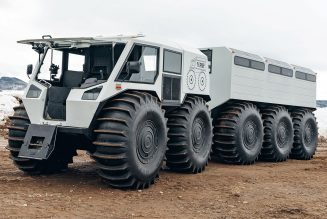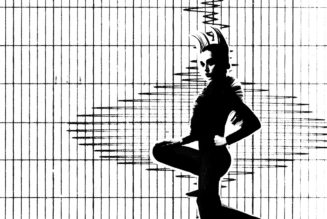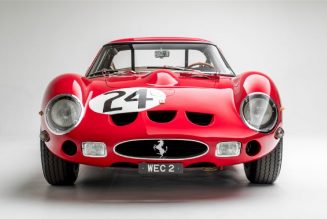The MotorTrend ’93 Truck of the Year competition proved that intensity isn’t a function of quantity. Although only three trucks answered the call this year, there was no shortage of talent. Each entrant is a standout in its own class. The Ford Ranger, for instance, has been the best-selling compact pickup in America for the last six years. The Isuzu Trooper is the all-time sales champ for import SUVs. And the Jeep Grand Cherokee, of course, is Chrysler’s sequel to the popular Cherokee, the vehicle that almost single-handedly built the four-door SUV segment.
Naturally, other new trucks were introduced over the past year. But the new Land Rover Range Rover County LWB and Defender SUVs, and Chevrolet and GMC turbodiesel extended-cab pickups couldn’t meet our minimum annual sales criterion of moving 5,000 units within the United States. Three others— the Isuzu Rodeo with the new 3.2-liter V-6, the Toyota T100 mid-size pickup, and the Toyota Land Cruiser with its new inline six-cylinder engine—didn’t have production versions ready in time to participate. And Dodge decided not to enter its Ram pickup with the 5.9-liter “Magnum” V-8.
However, with fewer entrants to concentrate on, each was scrutinized even more closely. In addition to instrumented testing, each judge took each candidate on an extended loop that included freeway, around-town, and stop-and-go driving, as well as stints on twisty back roads and a 6,000-foot climb up Southern California’s Mt. Baldy. This was followed by numerous discussions, strong opinions, and, at times, heated debate. We felt like an NFL coach trying to decide Sunday’s starter among three standout quarterbacks. We had three of the best trucks on the market and the challenge of choosing only one as our 1993 Truck of the Year.
The Winner: Jeep Grand Cherokee Laredo V-8
In one sense, the ’93 Truck of the Year competition was nip and tuck right down to the wire. In fact, in Subjective scoring, our six judges were split over the first-place finisher. Yet, in another sense, the competition was a clear runaway. The Grand Cherokee Laredo, equipped with the optional 5.2-liter V-8 engine, establishes such a high mark for its class in terms of performance and capability, it emerged a solid winner.
With its combination of abundant power, well-tuned suspension, versatile drivetrain. and an array of features, the Grand Cherokee is a vehicle that has something for everyone. “This is the sports car of [SUVs],” wrote one editor. “It has a strong V-8 to launch you down the straights, plus its responsive handling lets you carve through corners with more grace than most [SUVs].” Another tester seconded the motion: “Its wonderfully firm suspension and handling make it feel like a sporty car.”
The Grand Cherokee is available in four trim levels: base, Laredo, Limited, and Grand Wagoneer. The eight-cylinder engine comes standard in the flagship Grand Wagoneer and is optional in the other models. Chrysler chose to enter the Laredo because it’s the volume leader in sales, plus, with the optional V-8 package, it offers an excellent performance-to-value ratio.
With 220 hp and 285 lb-ft of torque, the Jeep leads the class in power (with the sole exception of GMC’s $30,000, limited-production turbocharged Typhoon). In the Objective categories, the Grand Cherokee took a substantial lead based on several strong performances, including an 8.7-second trot to 60 mph, 16.6-second quarter mile run (at 83.4 mph), and a quick 59.8-mph slalom.
Yet, our test Laredo—complete with V-8, four-speed automatic transmission, four-wheel ABS, Quadra-Trac full-time all-wheel-drive, driver-side airbag, cruise control, Class IV 6500-pound towing package, and non-CFC air-conditioning system—stickered for only $25,140.
In the Subjective scoring, the Jeep earned its highest marks in the areas of Ride and Drive, Chassis Dynamics, and Dollar Value. Given its well-mannered handling, stable cornering, amiable ride quality, off-pavement versatility, and long list of available creature comforts, the Grand Cherokee Laredo stands unquestionably among the best in its field. Mix in the potent V-8 and first-in-class standard airbag, and, as one tester put it, “The Grand Cherokee leaps to the head of its class.”
Aside from all the sensible reasons for picking the Grand Cherokee as MotorTrend‘s 1993 Truck of the Year, there’s one emotional reason: It’s just plain fun to drive. As one editor summed it up, “The Jeep is a blast to drive. With plenty of punch, a broad powerband, and great handling, it puts a grin on your grille.”
Runner Up: Ford Ranger XLT
The redesigned 1993 Ford Ranger is a prime example of how far pickups have come since the days of the buckboard ride and grin-and-bear-it interior accommodations. The Ranger has been the king of the compact truck hill for the last six years, and for 1993, Ford has upped the ante with more contemporary sheet metal, an updated interior, and retuned suspension and steering systems.
The Ranger’s new look brings the pickup solidly into the 1990s. “Its modern, yet masculine styling,” wrote one judge, “walks the line between ‘sport truck’ and ‘work truck. ‘” Inside, the Ranger drew mixed reviews. While it was applauded for its thoughtful control placement, comfortable seats, and handy armrest/storage compartment, some criticized the quality of the trim.
Although a carryover, the optional 4.0-liter V-6 in our XLT is still one of the Ranger’s brightest highlights. With 160 hp, a stout 220 lb-ft of torque, and responsive multipoint fuel injection, the Ranger was praised unanimously for its strong output, solid, refined feel, and snappy performance. One tester noted, ”You can climb hills with little effort, and the competent four-speed automatic makes wise gear selections.” Another simply said, “It’s the best engine in its class.”
For 1993, the Ranger’s handling and ride quality have been upgraded to complement its impressive powertrain. The truck was quiet and balanced. Body roll was evident while cornering, but well controlled. Even in the twistiest parts of our driving loop, the truck proved tight and stable, with a surprisingly supple ride. One tester stated, “The Ranger is so comfortable and such fun to drive, you almost forget there’s a bed back there.” Several drivers, however, felt Ford’s over-assisted power steering diluted the driving experience. “The Ranger tracks fine and goes where it’s pointed, but lacks the crisper, communicative feel of the Toyota Pickup.”
Overall, we found the new Ranger ranks among the best in its class. In Subjective scoring, the Ford led the field in the categories of Styling and Design, Quality Control, and Occupant Comfort and Convenience, and three of our six editors scored the Ranger highest overall of the group. For the foreseeable future, the Ranger seems well poised to continue its class domination.
Runner Up: Isuzu Trooper LS
In redesigning the popular Trooper, Isuzu’s philosophy was apparent: More IS better. More space, more creature comforts, more power, and more sophistication. In both design and driving experience, the new Trooper exudes a feeling of solidity and refinement. In fact, it drew more than one comparison to the much-pricier Range Rover. “In style and execution,” wrote a Judge, “the Trooper is a closer competitor to the Range Rover than either the Cherokee or Explorer.”
The Trooper’s true forte is its generous interior, from the ample headroom and legroom to its cavernous rear cargo capacity. One tester commented, “In terms of utility, it’s hard to fault the spacious Isuzu. There’s plenty of room inside, and the well-thought-out folding rear seats make it easy to use.” Not surprisingly, the Trooper’s scores led the field in the Utility and Function category.
Where the Trooper lost points was in the performance areas. Although the 3.2-liter V-6’s 190 hp and 195 lb-ft of torque felt adequate during normal driving, as one editor noted, “The power-to-weight ratio is just too low for anything more demanding.” While ride comfort and overall suspension control were well received, the SUV’s tall stance, formidable 4,155-pound curb weight, and long-travel suspension conspired for noticeable body lean during cornering. “The plush suspension is docile as a lamb. But when speeds increase, it tends toward too much rock and roll.” One driver summarized the high-speed handling: “It never feels out of control, but it never really feels like much fun either.”
The recirculating-ball steering was generally applauded for accuracy and feedback, although its slow response sometimes left the driver feeling a click behind the action. Still, we appreciated the Isuzu’s excellent driver ergonomics, folding outside mirrors, ample storage compartments, adjustable rear headrests, and smooth, quiet ride.
The Trooper includes an excellent warranty package plus a free roadside assistance program. Nevertheless, with a test price pushing $29,000, one judge considered it “too [expensive] for its own good.”
The lasting impression was favorable. “I could easily live with this on a day-to-day basis.” Another editor observed, “Overall, it’s a good solid vehicle. I’d be proud to have my family safely riding around in a Trooper.”
Report Cards
Our 1993 Truck of the Year evaluation procedure is broken down into two major categories: Subjective and Objective.
In the Subjective category, the existing best-in-class vehicles are used as a 100-point baseline, so a score of better than 100 points would mean the candidate truck exceeds the benchmark, while a sub-100-point score would mean it falls short of its existing top competition.
Objective testing constitutes the last two major readings on the chart: Performance and Handling. Performance is made up of three elements: 0-60-mph time, quarter mile time, and combined EPA fuel economy. Handling consists of lateral acceleration, slalom speed, and 60-0-mph braking distance.
The figures a candidate generates in each of the Objective categories are compared to those generated by the best-selling vehicle in the class (tested in advance) to determine a final score. Just as in the Subjective scoring, a rating of 105 would indicate the candidate is 5 percent better than the benchmark in this particular area. The accounting firm of Ernst & Young conducts the final tabulation and auditing of the results.
| Ford Ranger XLT | Jeep Grand Cherokee Laredo V-8 | Isuzu Trooper LS | ||
| Fuel Economy in MPG (city/hwy) | 14/18 | 14/18 | 15/18 | |
| Acceleration, 0-60 mph, sec | 8.4 | 8.7 | 10.8 | |
| Quarter mile, sec/mph | 16.6/81.4 | 16.6/83.4 | 17.9/76.9 | |
| Skidpad, lateral g | 0.76 | 0.74 | 0.74 | |
| Slalom, mph | 59.8 | 58.6 | 56.6 | |
| Braking, 60-0 mph, ft | 130 | 134 | 151 | |
| SCORING | ||||
| Styling & Design | 102.37 | 98.47 | 100.3 | |
| Occupant Comfort & Convenience | 101.89 | 99.68 | 101.32 | |
| Ride & Drive | 102.57 | 105.38 | 96.21 | |
| Chassis Dynamics | 102.5 | 103.83 | 96.21 | |
| Dollar Value/Market Significance | 111.17 | 113.25 | 83 | |
| Utility & Function | 101.11 | 102.33 | 105.61 | |
| Performance | 95.3 | 103.92 | 95.18 | |
| Handling | 102.88 | 114.35 | 113.67 | |
| FINAL SCORE | 923.91 | 942.84 | 884.91 | |










